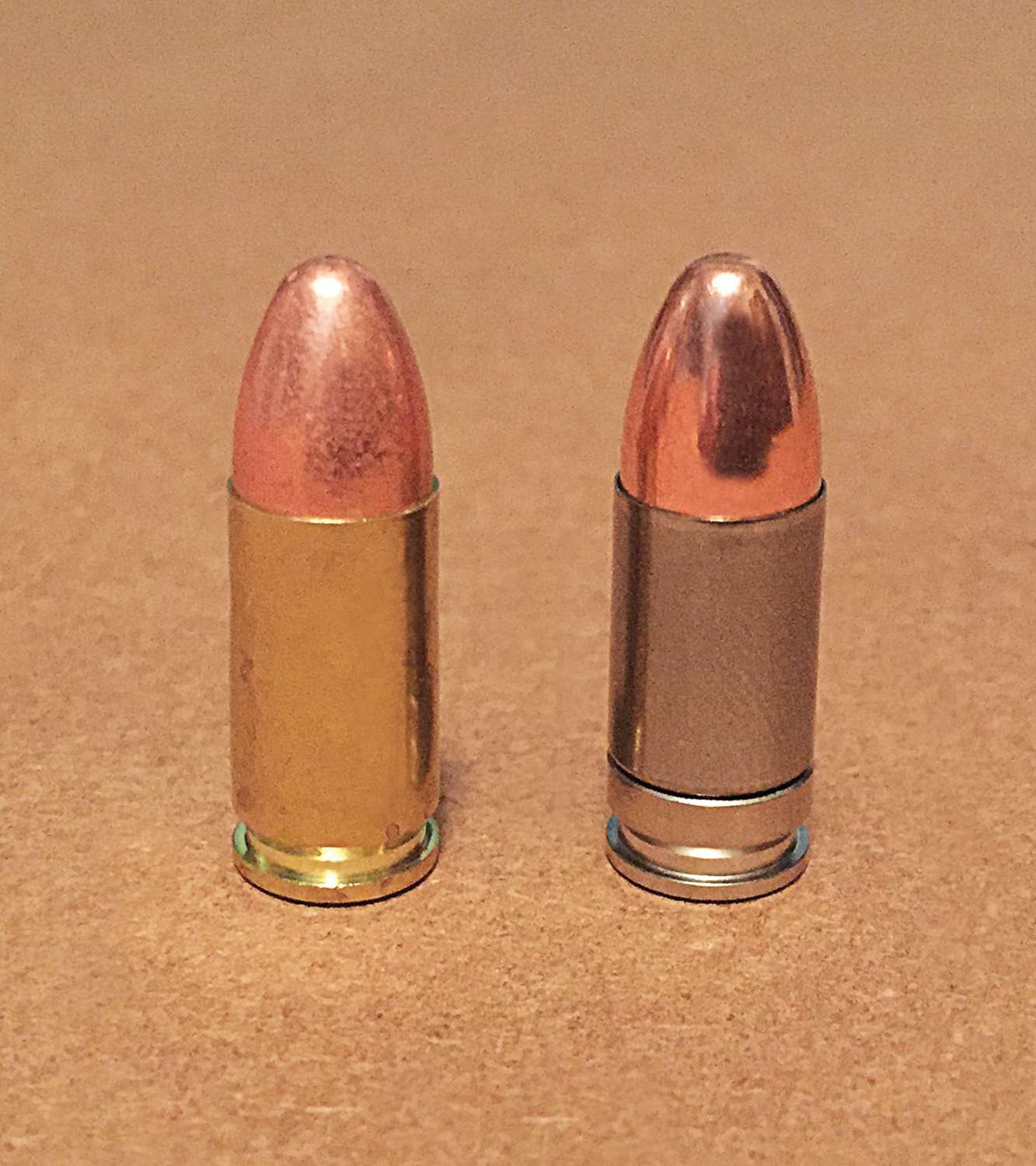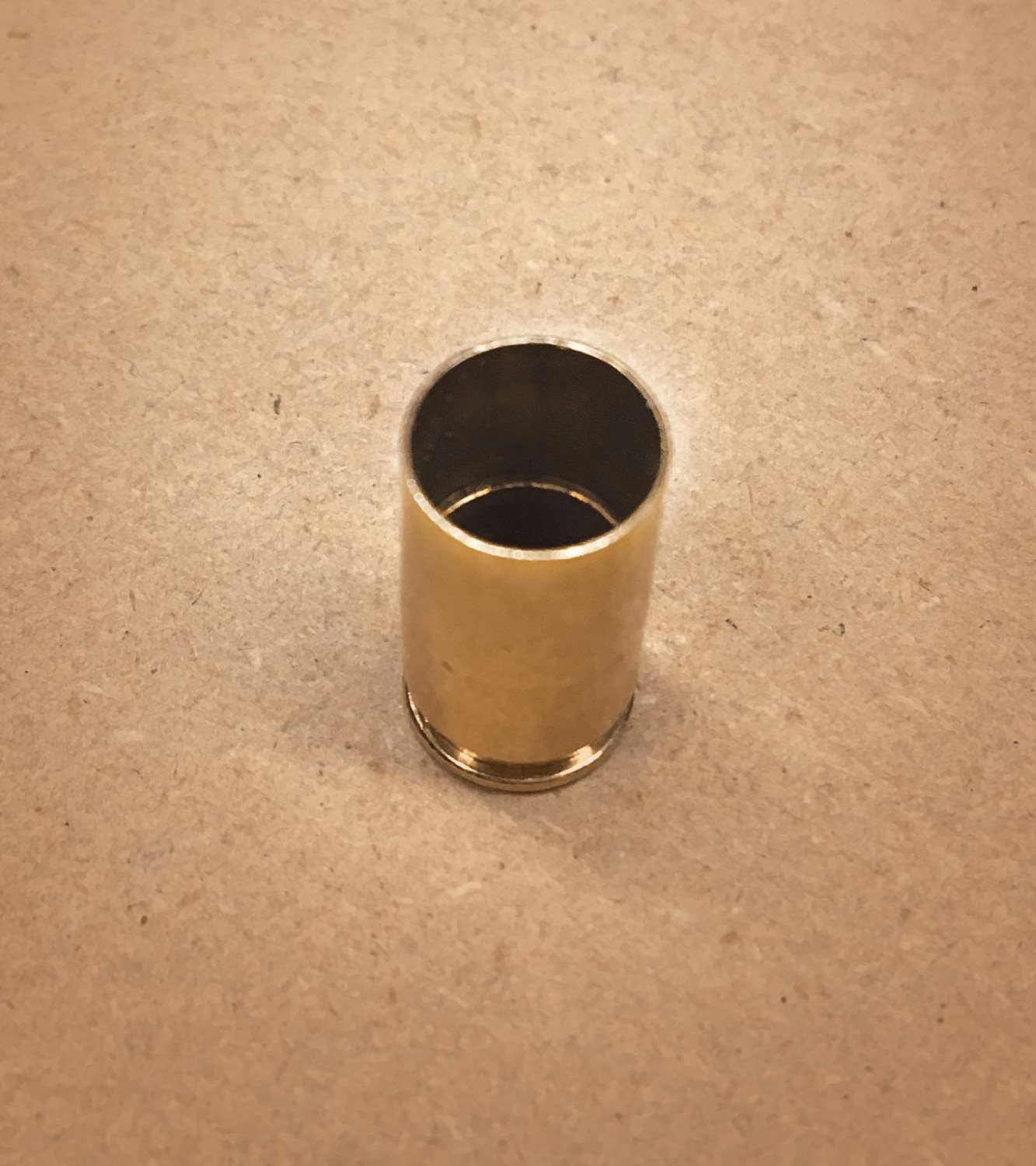
Few things in the firearms “biz” have proven more enduring than brass as a case material. Generally a 70/30 mix of copper and zinc, it has thermal, lubricity, workability and corrosion-resistance characteristics that make it a natural for the job of turning powder, primer and projectile into velocity. There’s even a case—ha, ha—to be made that it is eco-friendly: Roughly 90-percent of all brass is recycled. It is unclear if reloading figures in this calculation in any way, though we think we’ve done our part on this score.
A run coming up on 200 years would be respectable by any standard, but as we said a year ago May, some sharp elbows may soon be flying in the mostly-settled realm of case materials. With none of the disadvantages of the essentially non-reloadable steel and aluminum pretenders to the throne, S3 Reload now boasts a set of cutting-edge sizing and flaring dies to mate the home reloader up with Shell Shock Technologies “NAS3” case technology.
Technology
If that “cutting edge” business seems to risk overstatement, consider: While the swap to SST dies obviously duplicates part of your existing set-up, it nets you an absolute minimum of three advantages.

In the first place, SST cases are 20 to 30 percent cheaper than new brass cases (for the mathematically inclined/obsessed, about 750 new brass cases will pay for your S3 dies). Second, once you switch, you won’t have to go back to predecessor technologies to load brass cases. Regular dies are verboten on SSTs, but S3s work just fine for either case material. (A 2”b” benefit here: Because S3 dies use a spring to eject the case from both sizing and flaring steps, your shell plate will never peel a rim from a case again, leaving the remainder of the damn thing stuck infuriatingly tight in the die body.)
Third—and obviously—you’ll get all the metallurgical advantages of the nickel-alloy body and aluminum head combination: As many as 5x reloads, 2x tensile strength, 50 percent lighter, more consistent internal volume and magnetic retrievability.
Reloading Considerations
When it comes to reloading with the S3 dies, there are a few new considerations. While the mechanics of reloading can differ a bunch depending on whether you go single stage, use a turret machine or use a progressive, the nuts-and-bolts of the seven steps are strikingly similar. Not quite so with NAS3 cases, and the differences center mainly on preserving the joint between the upper and lower components when re-sizing and flaring. In no particular order, here they are:
Lube — We know a lot of reloaders who save case lubing for rifle only, where ultra-slick carbide is simply too expensive for most hobbyists (and even some 20,000 rounds/year or more guys and ladies). Straight-wall pistol, they think, has no appreciable need for lubing of cases. Technically, they are correct, and though we did it ourselves for many years we now consider this balderdash. Lube cases, and you’ll notice a huge and immediate easing of the forces and stresses no matter what cases you use. For SSTs, it’s a must.
Our favorite is here at Dillon, but there are many options—even do-it-yourself concoctions that seem to work just fine.
Read The Instructions — Ladies, we know you will, since the “Hold my beer, I’ve got this” gene seems to reside on the Y chromosome. But the S3 dies work in a fundamentally different way than other de-capping and flaring dies (essentially ejecting the case from the die with a polyurethane spring, rather than having the shell plate pull the worked case out of the tool by the rim), and this needs to be accounted for correctly.
S3’s (particularly excellent) set of instructions can be found here, and video here.
And did we mention lube?
Sized/Flared — New SST cases will come sized and flared—take advantage of this. Back up/out the appropriate dies and save the effort. (Dillon folks: S3 has a special flaring setup for presses that charge at Station 2.)
We also think the SSTs are a tough first reload, though “why,” exactly, we’re not sure. Second, third and subsequent reloadings have seemed smoother, and especially in terms of primer seating.
Brass Cases — Most brass cases will work fine with S3 dies, but we’ve encountered a comparatively important issue that you’ll need to be watchful about: In the re-sizing step, variations in the internal profile of a small percentage of brass may lead you to think your S3 dies are not working correctly. Unlikely.
The biggest hint that you have this problem will be two-fold. First, the apparent pressure you need to re-size/de-cap will go up—often dramatically—and measurable but unexplained increases in finished round OAL will appear sporadically.
The source of the problem is one and the same—brass cases transition from “wall” thickness to the “web” along different internal curves. Some of these will stop the case pusher/decapper short of the true bottom of the case (though the spent primer will generally eject as expected) by as little as .005”, but possibly as much as .100 (yes, one-tenth of an inch).
This collision causes a shorter “throw” of the press stroke in proportion to the (mostly unobservable) curve inside the case, and therefore shortens seating depth for the bullet on the other side of a progressive press. The occasional, variable and unexpectedly longer OALs are a function of the internal curvature of the case being sized, and not a malfunction in any of your dies.

On the upper end of the OAL increases, finished ammunition may have mechanical integrity problems, to say nothing of poor feeding and/or chambering characteristics. Again, there’s a ray of light: These cases are rare, and can be sorted by inspection—anything with a “stepped” web reinforcement will cause the problem in varying degree.
In all but the most severe cases (“Maxx” brass is the worst we’ve found for this; indeed, our regular dies balk), there’s a simple fix—back out the spring “cap” to the top of the die. As NAS3 inventor Volodymyr Drobockyi explained, the “pusher” function isn’t needed for brass, only sufficient tension to punch out the spent primer is (as there is no “joint” to support during the re-size).
We did a mini-test of our own to check this: We left the SST joint-preserving tension adjustments in place, but loaded from a randomly-ordered batch of SST, Winchester, Remington and PMC cases. 100 rounds of perfectly functioning cartridges was the result.
So if you can’t bear to chuck hundreds (or maybe thousands) of brass cases in a switch to SSTs, know you won’t have to.
And lube, right?
Revolver shooters — We grant you’ll need a somewhat specialized revo at present to use SST cases (we reviewed a fine one here), but the greater inherent lubricity and cool-to-the-touch nature of NAS3 metallurgy got our attention: The “net ejectability” is simply better. While it was below our threshold at the time—we just were “tuned” enough to feel it—subsequent shooting makes us think they load better too. The lighter case weight also moves the center of gravity of cartridges forward, and this speeds loading of moon clipped ammo as well.
While we aren’t privy to the precise rollout plan for other calibers, we know .45 ACP is coming (along with .308, .223, .40), so those S&W 625 folks can benefit from this too. As to the world of rimmed revo, suffice it to say we think the Shell Shock folks are too savvy to leave it alone should our suspicions about the advantages be vetted by other revolver fans.
And don’t forget to lube.
Visit Shell Shock Technologies at www.shellshocktechnologies.com; 500 case are $60; 1000 cases are $100; 10,000 cases are $850.
Visit S3 Reload at www.s3reload.com; S3 dies sets are $79.
Frank Winn has been studying arms and their relationship to tyranny, meaningful liberty and personal security all his adult life. He has been a firearms safety/shooting instructor for more than 20 years, and earned state, regional and national titles in several competitive disciplines.

































